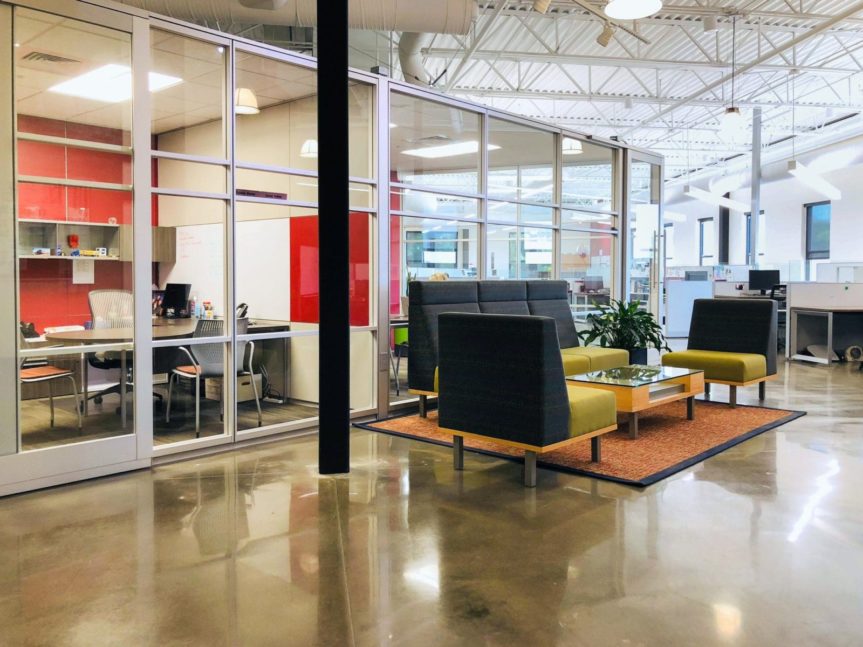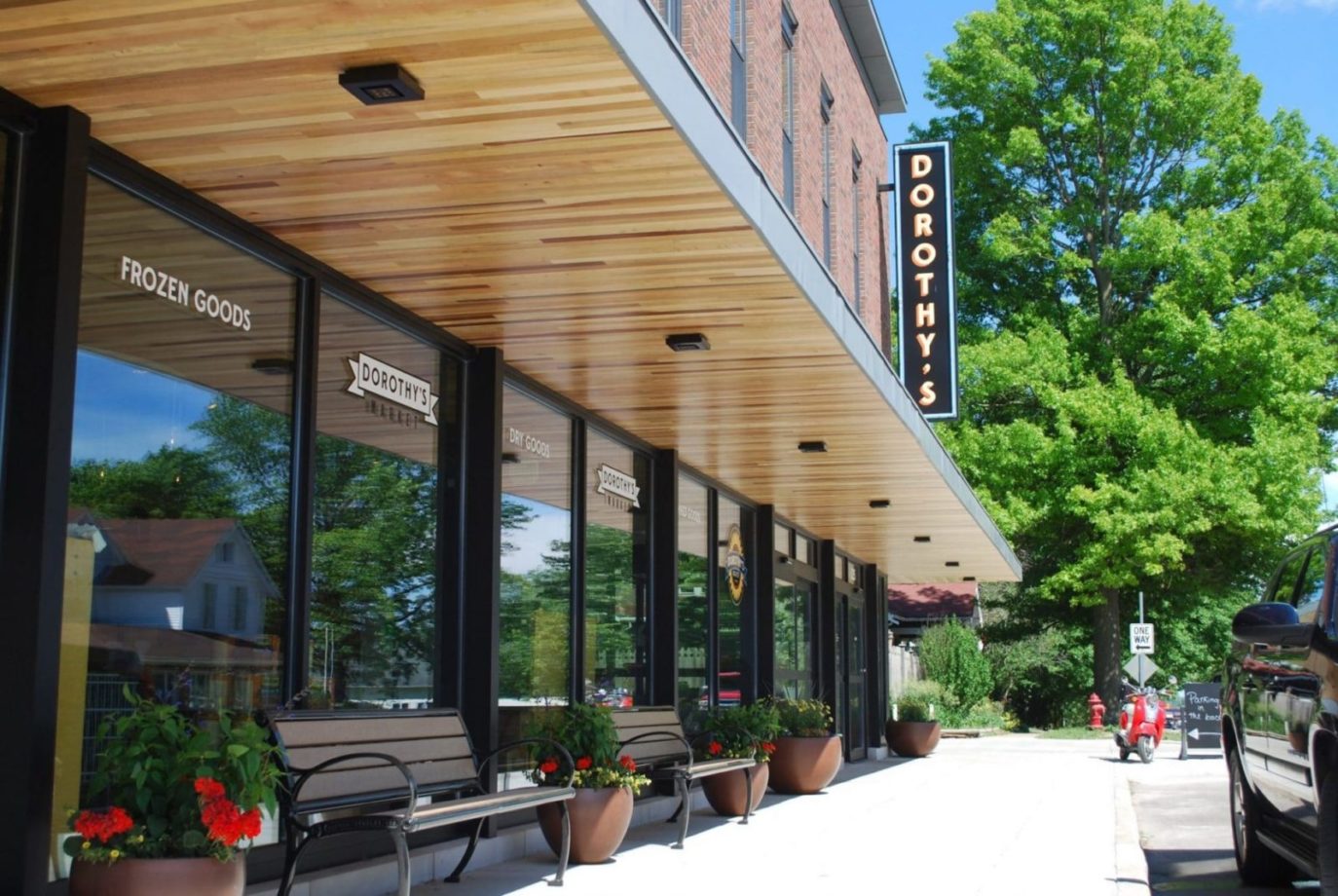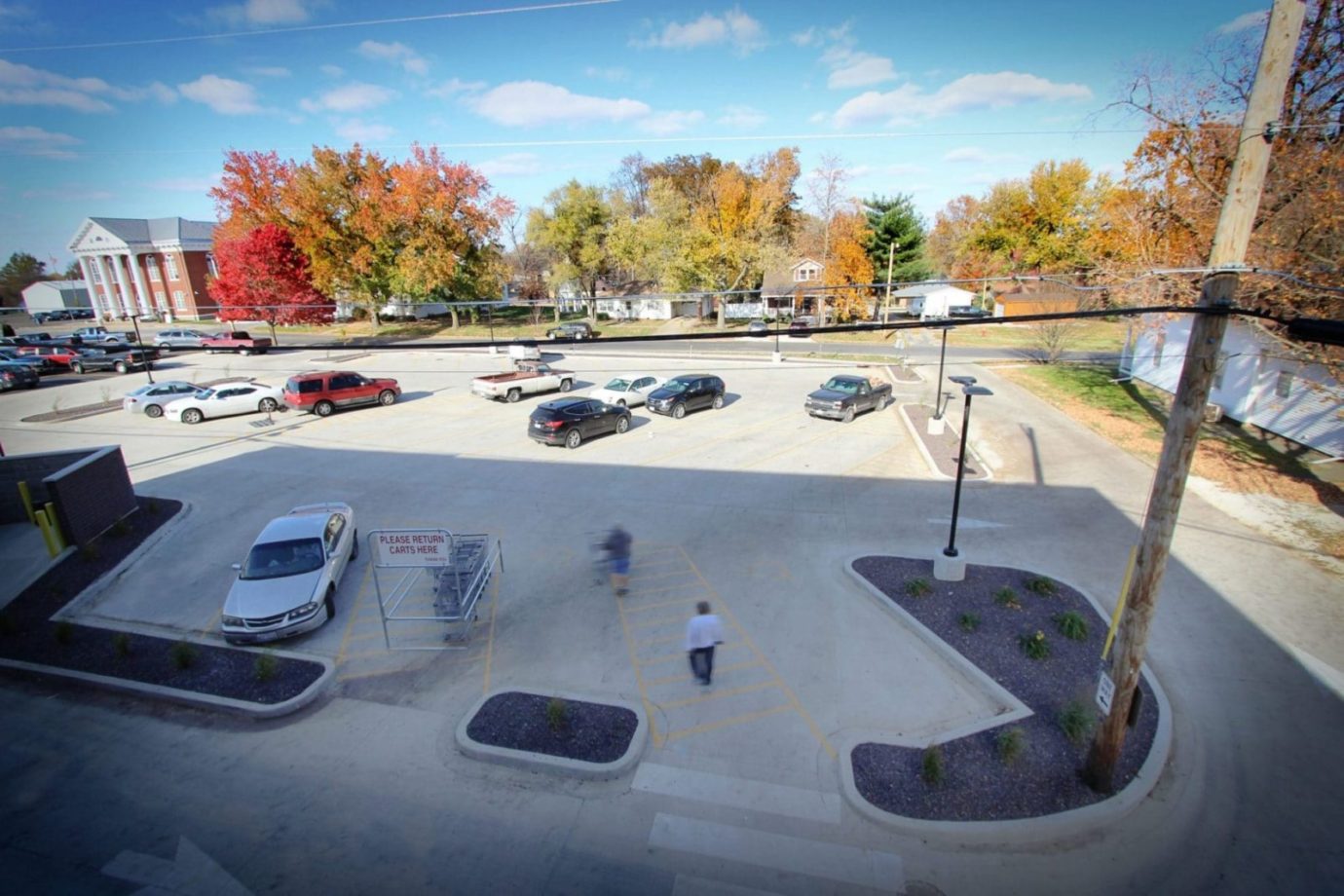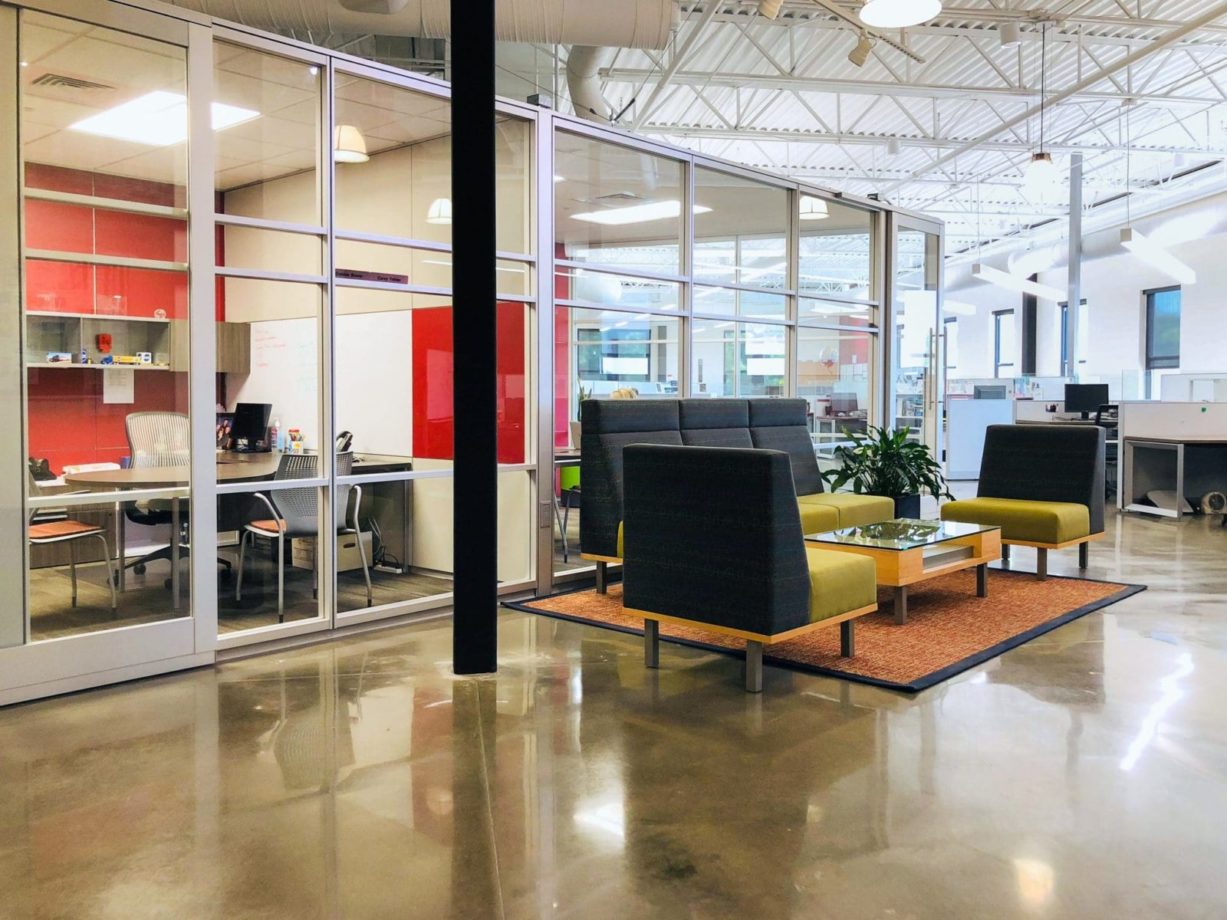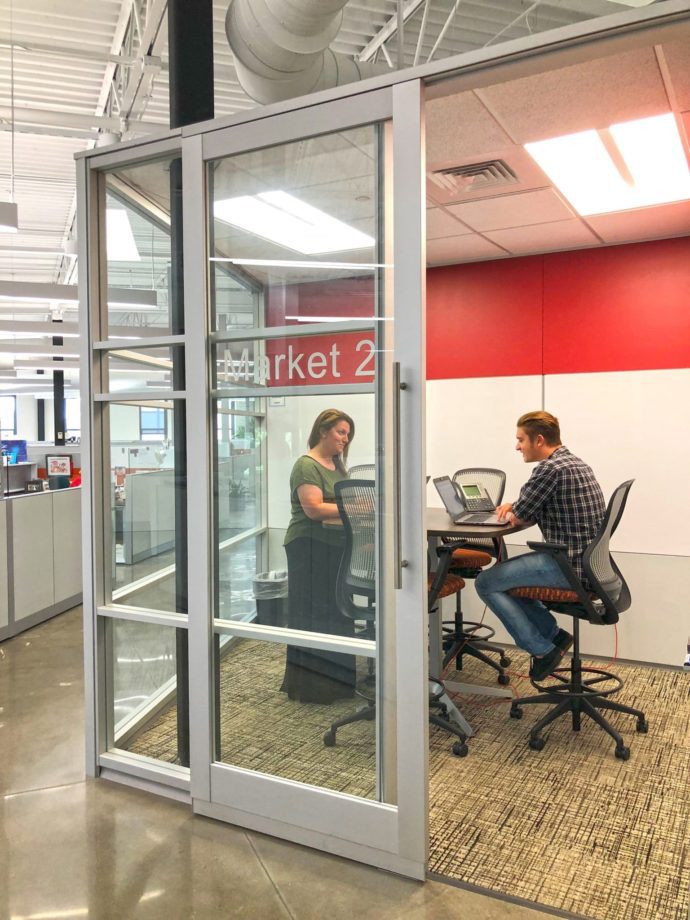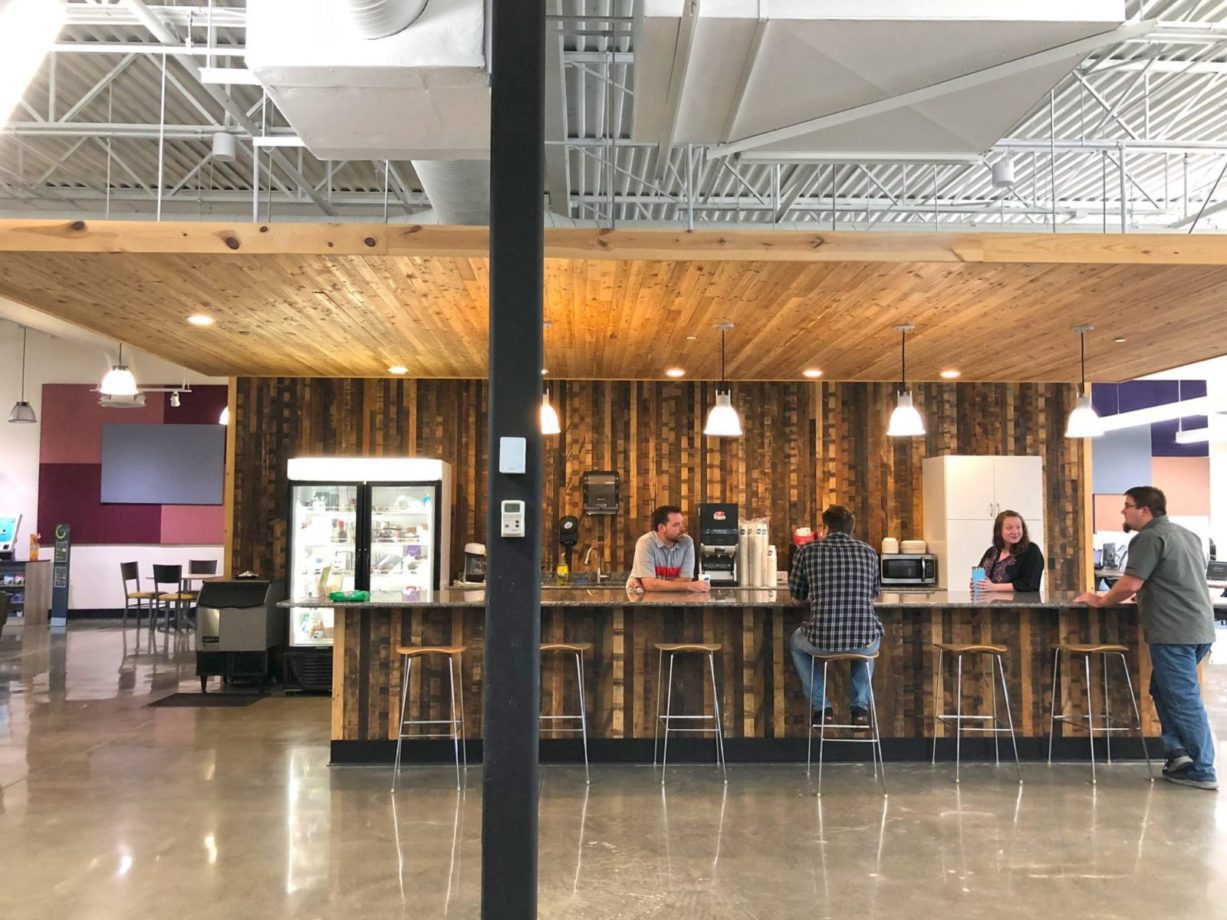Project Summary
Dot Foods, Inc., the nation’s largest food redistributor, contracted with Kiku Obata & Company and Klingner to design Dorothy’s Market, a discounted food market open to the general public, and an office buildout on the floor above.
For Dorothy’s Market, Klingner provided a building and site concept design, geotechnical investigation, environmental services, fire flow design, site development, mechanical / electrical / plumbing design, construction staking, construction materials testing, and special inspections. Site design included parking layout, surface parking screening, and amenities and landscaping based on the recommendations of the “Mt. Sterling, Illinois Uptown Long-Range Strategic Plan”. Work required an IDOT permit for work on Right-of-way, including for sidewalks and entrances. IHPA clearance was also required for the downtown historic district.
In the offices above, Klingner’s team translated the vibrant, modern character of the adjacent retail space into a functional office design by strategically incorporating high-end finishes into an open cafe / kitchen area. By utilizing these finishes in limited, yet visually effective ways, Klingner’s team carried the appearance of the lower-level further than the client thought possible while staying within budget. Suspended LED lights were installed throughout the room, bringing both energy efficiency and style. The roof, duct work, and pipes were also left exposed, further enhancing the office’s contemporary look by adding an industrial ethos. A large storage area and enclosed restrooms were also included behind the kitchen.
The office itself is open, featuring a modular cubicle system that was pre-selected by the client and is arranged into several diagonal banks to break the traditional office grid. Privacy was added to the workplace through a series of centrally-located glass modular spaces with walls that nearly extend to the ceiling. To prevent sound transfer, Klingner installed a lower ceiling over these rooms – completely enclosing these select spaces. Klingner worked with a consultant to verify the dimensions of all traditional and glass cubicle spaces, ensuring that this nontraditional arrangement functioned by creating plans that verified clearances, ensured ADA accessibility, and maximized the number of cubicles to be incorporated into the final design.
